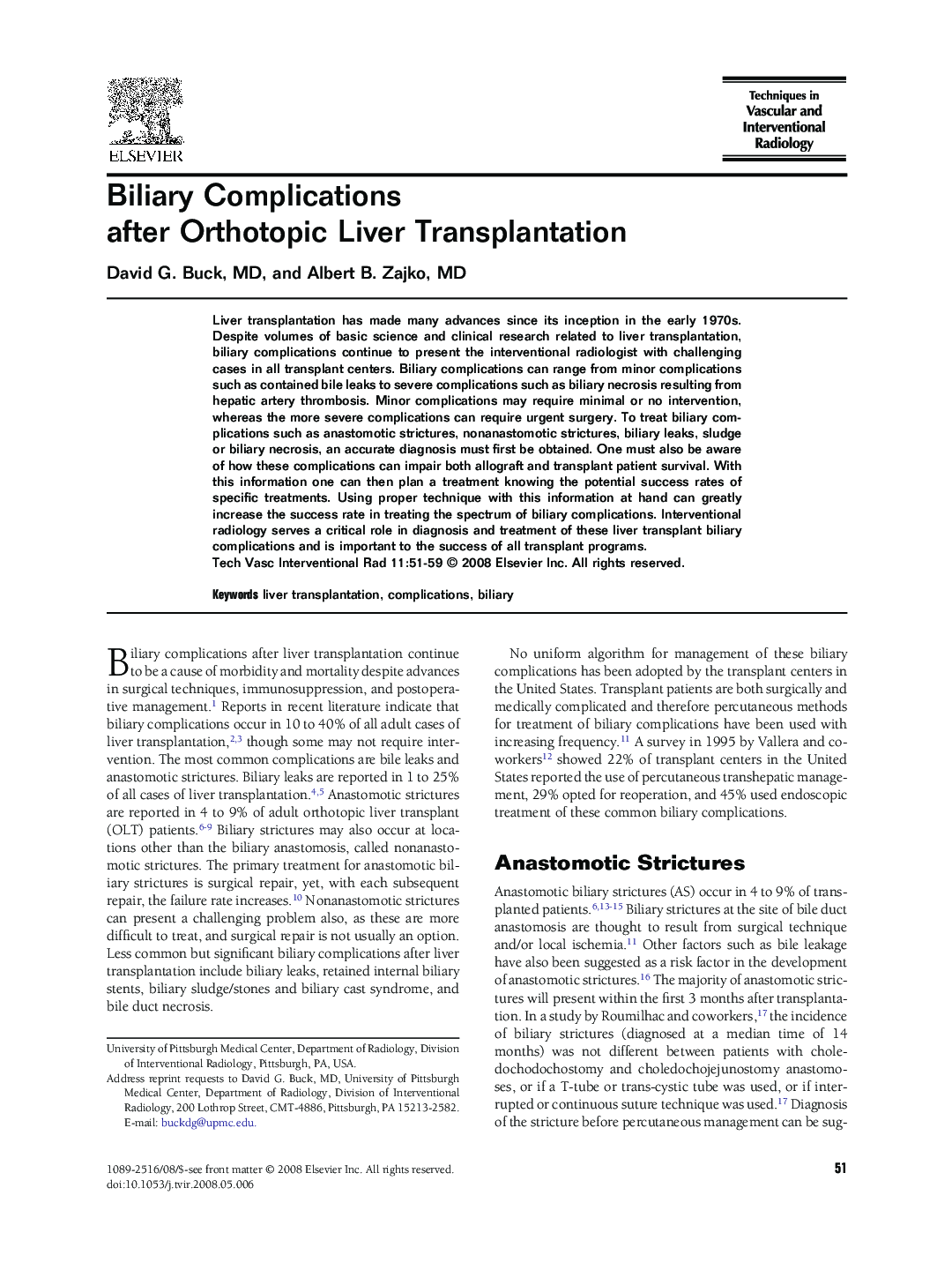| Article ID | Journal | Published Year | Pages | File Type |
|---|---|---|---|---|
| 4251946 | Techniques in Vascular and Interventional Radiology | 2008 | 9 Pages |
Liver transplantation has made many advances since its inception in the early 1970s. Despite volumes of basic science and clinical research related to liver transplantation, biliary complications continue to present the interventional radiologist with challenging cases in all transplant centers. Biliary complications can range from minor complications such as contained bile leaks to severe complications such as biliary necrosis resulting from hepatic artery thrombosis. Minor complications may require minimal or no intervention, whereas the more severe complications can require urgent surgery. To treat biliary complications such as anastomotic strictures, nonanastomotic strictures, biliary leaks, sludge or biliary necrosis, an accurate diagnosis must first be obtained. One must also be aware of how these complications can impair both allograft and transplant patient survival. With this information one can then plan a treatment knowing the potential success rates of specific treatments. Using proper technique with this information at hand can greatly increase the success rate in treating the spectrum of biliary complications. Interventional radiology serves a critical role in diagnosis and treatment of these liver transplant biliary complications and is important to the success of all transplant programs.
